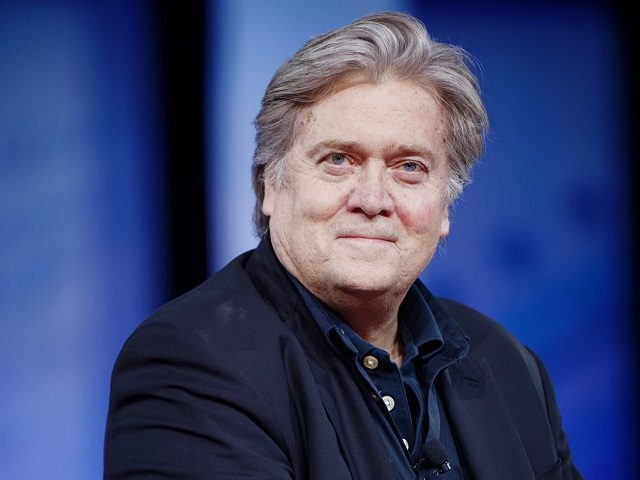Steve Bannon has been pushing the White House to propose a hike in the top rate paid by the wealthiest Americans, according to administration officials.
The details of the plan have not been released. In fact, after the story was first reported by Axios’ Jonathan Swan, White House spokesman Sean Spicer denied that any such plan is under consideration. Administration officials, however, tell Breitbart News that a higher top rate has indeed been discussed by Bannon and others.
So what might the Bannon tax plan look like? What would it mean for taxes?
1. A Four In Front. Bannon has said that he wants a top rate with “a four in front of it,” according to Axios. That is, Bannon is reportedly envisioning a top rate that would be 40 percent or higher. The current top rate is 39.6 percent on income above $418,400.
2. Clash with Mnuchin-Cohn? A higher top rate would seem to clash with the proposal put out in April by Treasury Secretary Steven Mnuchin and National Economic Council director Gary Cohn. Billed by Mnuchin as a “massive tax cut,” that plan would reduce the number of tax brackets to three from seven, with rates of 35 percent, 25 percent, and 10 percent.
3. A Hidden Tax Hike in Mnuchin-Cohn? The details of the Mnuchin-Cohn plan have yet to be announced. But depending on where the thresholds are set for the three brackets, it is possible that some Americans could experience a tax hike under the plan. For example, under the current tax code, income between $231,451 and $413,350 is taxed at the 33 percent rate. The Mnuchin-Cohn plan eliminates that bracket but it is unclear whether all of that income will fall down to the 25 percent bracket or some of it will get caught up into the 35 percent bracket. If the latter, then Mnuchin-Cohn would be a tax hike on income pushed into the 35 percent bracket.
4. A Higher Top Marginal Rate Does Not Necessarily Mean A Tax Hike. Although a hike in the top rate is often described as a tax hike on the wealthy, that is not quite right. The way our progressive income tax system works, a hike in the top rate only affects the tax rate on income above the threshold for the top tax bracket. The rate paid on income below that bracket doesn’t change. And if the rates that apply to the lower brackets fall, even wealthy Americans could see their tax bill fall despite the higher top rate because they would be paying lower rates on the first $418,000 or so of income.
5. A Mnuchin-Cohn-Bannon Plan: Higher Rate Yet Still A Tax Cut. As a thought experiment, imagine that the Mnuchin-Cohn plan is combined with a Bannon plan. Let’s say this means that the top rate is set at 44 percent (replacing the current 39.6 percent rate), the current 35 percent through 28 percent rate get pushed down to 25 percent and the current 15 percent rate is pushed down to 10 percent. This would mean that nearly all Americans would see a big fall in their tax bills. Even many wealthy Americans would get a tax cut because so much of their income would be taxed at a lower rate. My back of the envelope math suggests that there might be no Americans facing a higher effective rate, and certainly none earning under $2 million in annual income. If we really do want to increase the rate paid by the wealthiest, it is easy enough to raise that top rate up a bit more.
6. A Political Strategy For Tax Reform. Reducing the number of brackets with a downward bias for income thresholds gives millions of Americans significant tax cuts while increasing the top rate makes it harder to depict the cuts as giveaways to the wealthy. This could make it far more likely that deep and substantial tax reform gets done. A slightly higher top marginal rate seems a small price to pay for that.

COMMENTS
Please let us know if you're having issues with commenting.